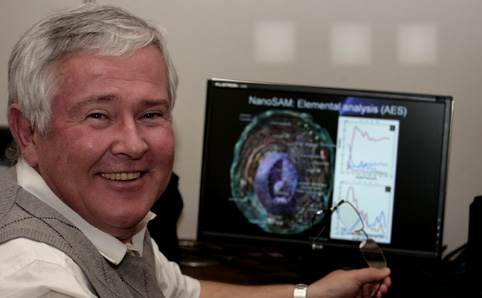|

|
| Prof. Lodewyk Kock, outstanding professor in our Department of Microbial, Biochemical and Food Biotechnology |
Novel antifungal, anticancer and anti-malaria drugs that have been identified in the research of Prof. Lodewyk Kock, outstanding professor in the Department of Microbial, Biochemical and Food Biotechnology at our university, will be disclosed later this year at major international conferences in Asia, Europe and the USA. Prof. Kock will be the keynote speaker at these conferences.
His presentations will be based on the department’s discovery of yeast assays linked to a new nanotechnology for medicine. The assays were recently discovered by his group and can be applied in the development of novel antifungal, anticancer and anti-malaria drugs.
Prof. Kock’s focused research at the university, which now also includes his novel nanotechnology for Biology, began in 1982 in collaboration with Prof. Pieter van Wyk (Centre for Microscopy). He recently collaborated with Prof. Hendrik Swart (Department of Physics).
Prof. Kock says the development of novel anti-malaria drugs in particular is getting attention across the world due to the high rates of morbidity and mortality caused by the disease worldwide. Approximately 225 million people are infected annually and about a million (many in Africa) die each year. “Many potential smart drugs have been identified with this research and should now be tested further,” says Kock.
These new drugs will be disclosed during Prof. Kock’s keynote addresses at the International Conference and Exhibition on Pharmaceutical Regulatory Affairs in Baltimore, USA, from 6 to 7 September 2011, the Medichem 2011 in Beijing, China from 9 to 11 August 2011 and the XVI Congress of European Mycologists in Greece, from 19 to 23 September 2011.